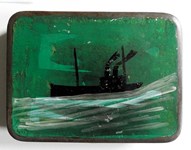Three years ago I was told by trade associations and specialists that while there was a concern growing over a lobby to ban antique ivory, it should be ignored and would go away by itself.
Two years ago I was told that these matters were going to be dealt with ‘behind closed doors’ and it was not a public debate that we should engage in.
One year ago I was told that any idea of a ban on antique ivory would be quietly shelved.
Now we are here, at a minute to midnight, with 20 millennia of human creativity ready to fall unnoticed into oblivion.
I have already written in past years on how I see many 1947-75 objects mistakenly appear at auction and how any certification system is flawed from the outset as a logistic and legal nightmare. My own solution would be to establish an Antique Ivory Committee which constantly scrutinises, polices and regulates the market.
I don’t want to repeat those arguments here but make a final explanation of what, I know, to be at stake.
My own motivation has never been the livelihoods of antiques dealers and auctioneers. It has been to avert the destruction of historic works of art that will follow in the wake of a total ban on antique ivory.
I say this from the perspective of a silver dealer – and a witness to the willingness of the general public at large to destroy large numbers of historic objects for financial gain.
The spike in bullion prices earlier in the decade led to a stampede of private owners trading collections of silver (and gold jewellery) collected by relatives for ready cash.
I recall a local bullion dealer who knew enough about Hester Bateman to save three or four pairs of sugar tongs from the melt. Another spotted a rare Scottish provincial 18th century ladle. But vast quantities of Georgian, Victorian and later silver disappeared off the face of the earth.
Disposal and destruction
This all happened a few short years ago because the people who inherited these precious objects saw it as an easy and quick option.
Now let’s suppose they didn’t see it as their best option, but their only one.
Under a total ban on antique ivory, mixed-media objects will only have any financial value to their owners if – in the case of a gold and ivory box – they are destroyed for the intrinsic value of their constituent components or – in the case of a sword with an ivory pommel – mutilated to allow for its legal sale.
Objects which are completely ivory? Well, they are worthless to their new owners, so if they do not like them and a museum does not want them they can only be discarded. One professional couple I connected with on Twitter last year said they had inherited some antique ivory and were giving it to the Born Free Foundation.
“ Let us dispel the myths and shine a light on the lies before the philistines storm the city
Let us not fall either for the lie that “all the important works of art are already in a museum”. Any auctioneer, dealer or specialist can attest to what is still being discovered day by day. Some of them are undervalued when they first enter the auction market.
I recall a few years ago the appearance in an auction in America of an ivory and silver mounted tankard catalogued as a ‘20th century mug’ and valued at £150-250.
It is, in fact, probably one of the most important pieces of British 18th century silver to come to light in my lifetime and with further research may throw new light onto the whole design group of silver produced by Nicholas Sprimont, Paul de Lamerie and Johann Kändler in the 1730s.
It was purchased and legally brought back to the UK.
If that same piece was bought into the same auctioneers today they could not sell it, they would advise it was unimportant, illegal and only worth its scrap value.
If the current exemption for pre-1947 antique ivory is removed here in the UK in a few months’ time, then the same could be true here.
It is all good and well to say ‘historic pieces will be exempt’ but the choice does not lie with the museum curators, the academics or the trade, it lies every single time with the owner/ inheritor of the object.
So let us dispel the myths and shine a light on the lies before the philistines storm the gates and sack the city.
A ban on antique ivory is not now or ever the answer to stopping the poaching of living elephants in Africa.
It is however, a licence to decades of destruction to a wealth of historic treasures.
Michael Baggott
Via email
IVORY CONSULTATION – your opinion counts
To respond online go to:gov.uk/government/consultations/banning-uk-sales-of-ivory
You can request a paper questionnaire by writing to: International Team – Ivory Consultation, 1E Nobel House, 17 Smith Square, London SW1P 3JR
Or ask for one by emailing ivoryconsultation@defra.gsi.gov.uk
Deadline for response is December 29, 2017













